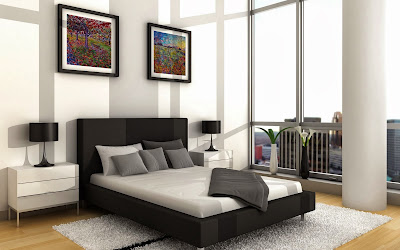
Do you do Curtains & Cushions? As a professional Interior Designer that's the phone call we dread to receive!
It happens more than you may think; I then have to go on to explain
(without sounding patronising) what this person really needs is an
Interior Decorator, this will then no doubt follow-on with me having to
further explain what the differences are between the two disciplines and
try to steer them in an appropriate direction.
I don't blame these people for getting the two mixed up; the general
public have been feed hours and hour of TV "instant" make-over
programmes and continuous glossy magazine features all under the
misleading label of Interior Design. Also this has prompted those in the
Interior Decoration and Soft Furnishing business to elevate their tile
to Interior Designers; again I don't blame them for doing this, it makes
good business sense to up sell yourself. But the lines have become
blurred as to what these two very different services offer - there is a
market for the two approaches, but where confusion resides with the
customer this has to be a bad thing!
So here with this Home Interiors - Client's Guide - series of articles I
will address the key aspects for client's that have a Interior Design
project in mind as to how they should go about searching for a Designer,
what to look for, how they work and charge, how to get the best out of
them and how a project gets off the ground to become a finished built
reality.
ABOUT HOME INTERIOR DESIGN
Home Interior Design is not to be confused with Home Interior
Decoration, as this tends to be only a skin-deep treatment to give a
style change or "make-over" to a property. Home/Residential/Domestic
Interior Design (whatever one may call it) is a much more fundamental
approach to the way you live in a property and how a building can be
made to work for the individual owners needs. This will not be just a
coat of paint (some new curtains and cushions) it is likely to start
with a in-depth rethink at how the property is planned and may involve
some considerable changes put in place before one even thinks of
decorations.
Interior Designers who specialize in Home Design can be viewed as
Interior Architects, and their abilities should cover all aspects of
building and architectural work to a property included minor/major
structural alterations and building extensions etc. They will go on to
cover all the "decoration" elements such as colours, finishes and
furnishings, but this is not necessarily the starting point for a
project. Kitchens, Bathrooms, Staircases etc are some of the core
planning elements that can structurally and technically change a
buildings layout; the flow and shape of a property can change
dramatically when approaching these areas.
All the technical services that make up an Interior Design project will
be undertaken by the Designer; Electrics, Lighting, Plumbing, Heating
and Ventilation etc, all are fundamental that need to be design-in at
the early stages of a scheme, even if it is just the principles of how
these may work. It is becoming even more important these days with the
opportunity for client to add-in to their project energy efficiency
solutions for the whole building.
Many Clients only have a very basic idea or framework of what they wish
from a project; it is however the Designers role to gain that
information and drawer out of the Client the full details of their
requirements, this then forming the project brief. This can be a very
personal experience with the Designer asking questions on how you live
now and changes you wish to make to your life style. Be as open as you
can as this forms an important foundation for any new design, remember
that the Designer is designing for you and not for them, so they need to
know how YOU tick!
For most Clients they really enjoy this consultation, as this may be the
first time that they have truly thought about their life style and what
they really need from the project, apart from a floor, walls and
ceiling. A good Designer will have the talents of a "pick pocket", you
will not know that so much information has been taken from you until you
see the first concept design, and then you will realise that the
smallest details have been included that reflects you and your life
style.
HOW DO YOU FIND A GOOD DESIGNER
Personal recommendations are always good, but remember, the Designer has
designed for the person who gave you the recommendation, so even if
their project is not to your taste this does not necessarily mean that
the Designer cannot design to your taste. If they were satisfied that
the Designer produced a sound creative solution that matched their
brief, then this Designer would more than likely be able to satisfy your
project requirements.
Web Sites are a good way of looking at a Designers portfolio of work
without making direct contact. Use the search engines and directories to
track Designers that are within the broad area to where you live. It is
no good having a Designer from Scotland if you live in London, and vice
a verse, so aim relatively local of around a 50 mile search radius!
Also be aware of companies that call themselves Interior Designers, but
are really Home Furnishing companies and they are only really interested
in selling from their shop or showroom. Offers of "free design service"
will always have a sales agenda behind it. A true Design Consultant
will be totally independent of any affiliated retail business and will
use the global market to source what is right for your project, no
commission or incentives involved.





















0 Response to "Home Interior"
Post a Comment